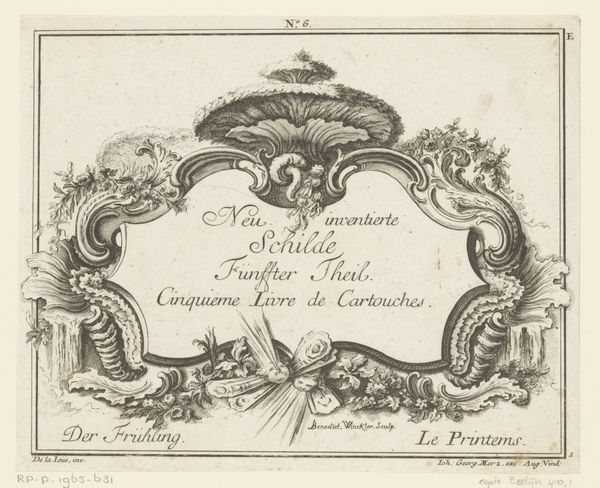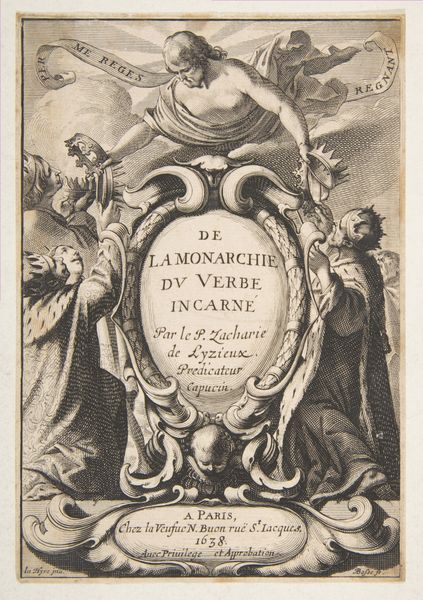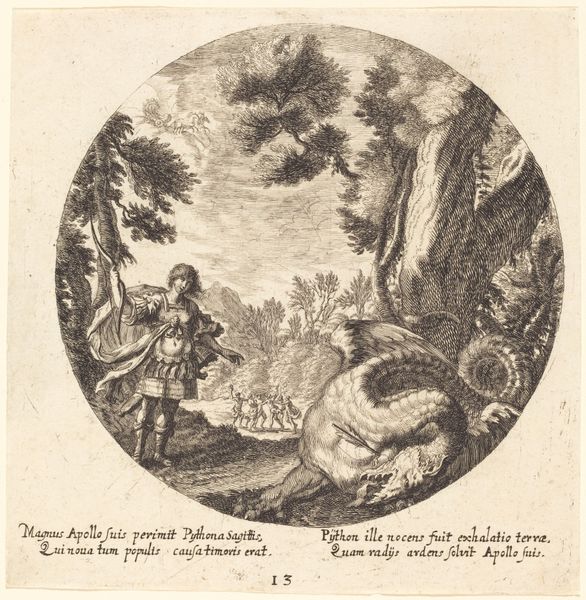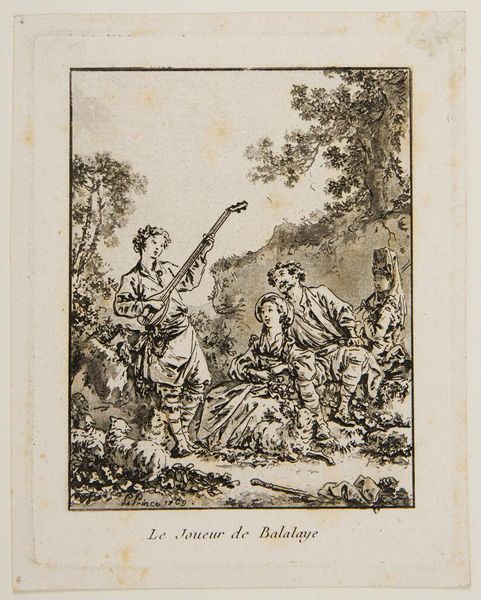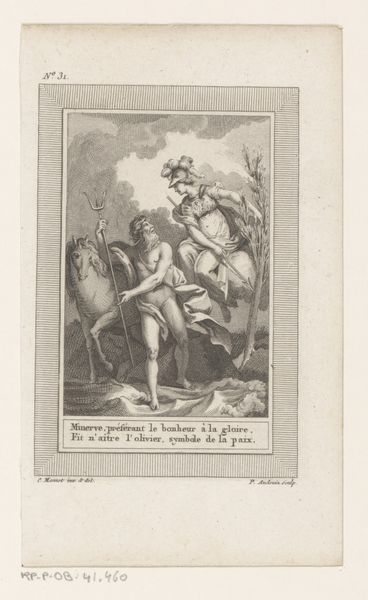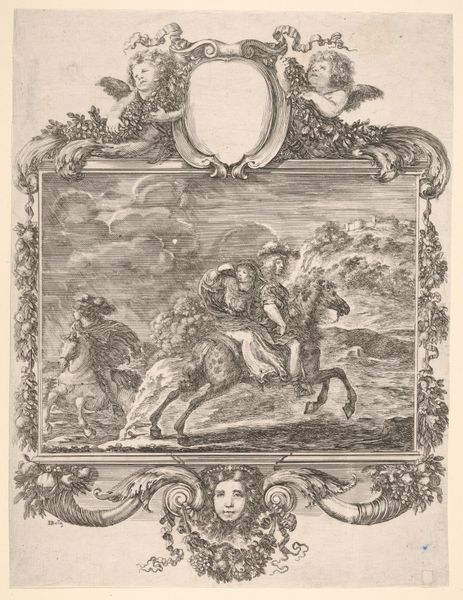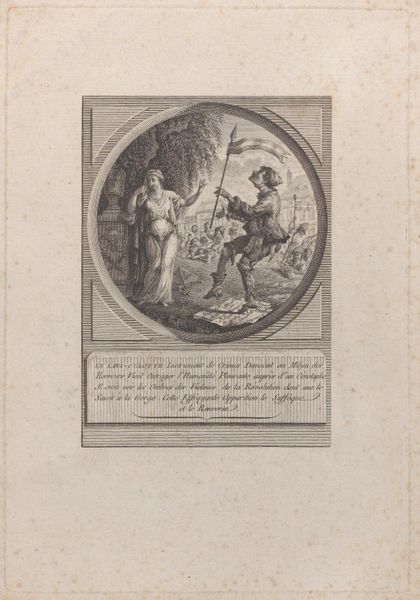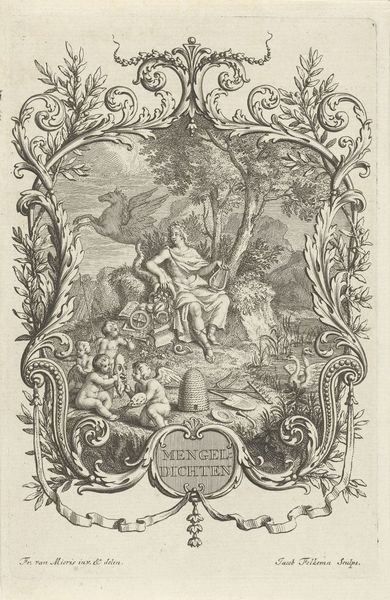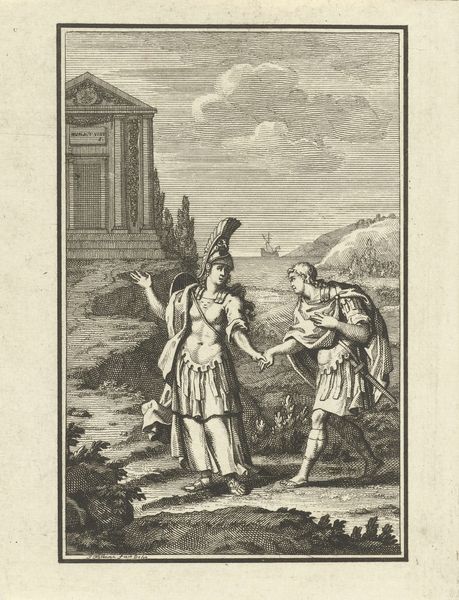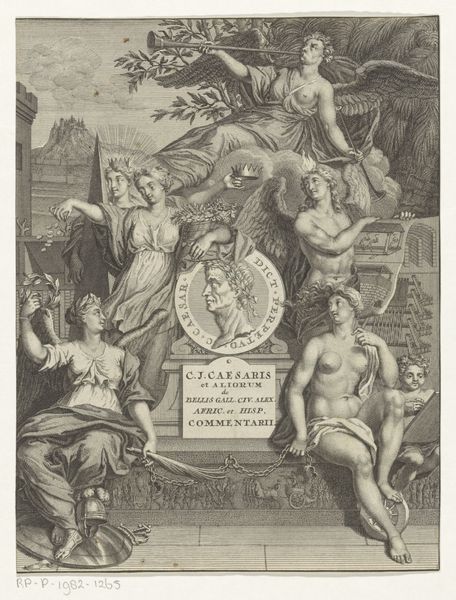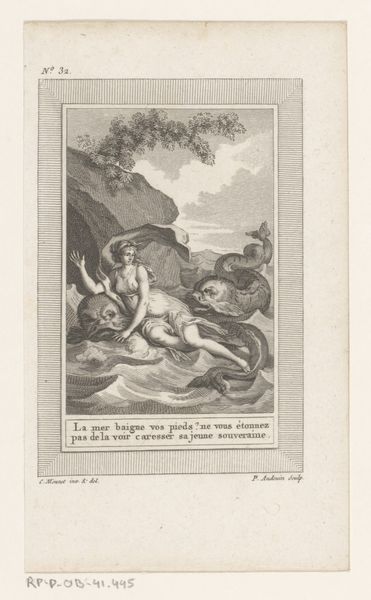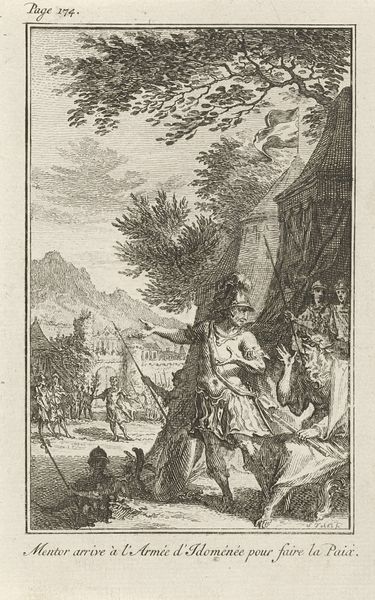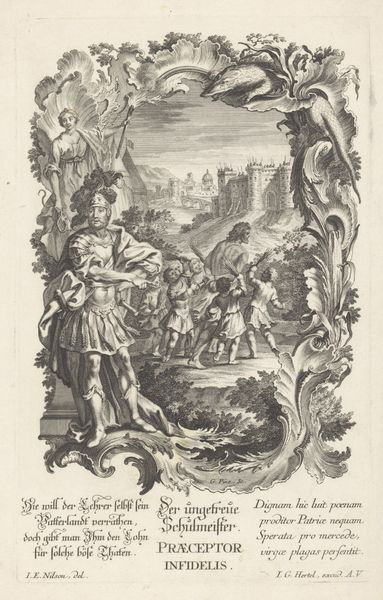
Dimensions: 261 × 189 mm (image); 266 × 196 mm (sheet)
Copyright: Public Domain
Curator: Well, Editor, here we have “The Fifty” by Jean-Michel Moreau the Younger, created in 1771. It is currently held in the collection of the Art Institute of Chicago. Moreau worked in engraving, etching, and drawing, and this work demonstrates each of those media as he transfers his skill onto paper. Editor: At first glance, it has a very structured feel. It's almost like looking through a perfectly ornate window onto a scene. Curator: The baroque style and academic elements of the piece combine to establish a kind of framework to contain the narrative scene that transpires below. You see the title, "La Cinquantaine" front and center. Then notice the symmetrical and precisely rendered ornamental frame that emphasizes the central narrative tableau, don’t you think? Editor: I do. Tell me, what does this precise etching say about the process? Considering its social context? It feels removed from the grit and labor I associate with artwork creation. I am struggling to consider its context and how it was produced. Curator: It is not coincidental that it lacks a grittiness you might be more used to. It’s an intimate history painting made reproducible through printmaking. Each carefully inscribed line has meaning; from the figures and gestures in the central scene to the neoclassical frame which itself contains symbols of status, familial lines, or maybe even wealth. It’s designed to project those ideals. Editor: And look at the hierarchy. It literally lifts the bourgeois subjects higher than the figures at the base of the composition, a man, and a child with only a dog by their side. It says something about societal position being ‘elevated’. Curator: Precisely. It’s a work dense with symbolism and its linear clarity lends a distinct authority. It has that academic and baroque sense of structure. But the scene still offers glimpses of that rococo movement with lightness and elegance, and touches of intimacy and fleeting sentiment, you know? The tenderness with which the people gaze and the cherubs soar above certainly evoke emotional response. Editor: It is that frame that really grabs my attention, it makes it feel incredibly crafted. Each part must have taken great time and planning, the labour itself seems significant. Thinking about the physical tools—the etcher's needles, the engraver’s burin—to yield such deliberate results fascinates me. The contrast makes a unique dynamic between the material processes. Curator: Looking closely reveals just how much intellectual planning and labour was involved in producing an image of delicacy and refined sentiment. Editor: Absolutely. And considering Moreau’s production within a context of making work available for social consumption shifts my appreciation. Curator: So even from a material perspective, there's a complex engagement with history, class, and visual narrative at play here. Editor: A complex relationship that both belies and upholds that "perfectly ornate window," you said before.
Comments
No comments
Be the first to comment and join the conversation on the ultimate creative platform.
